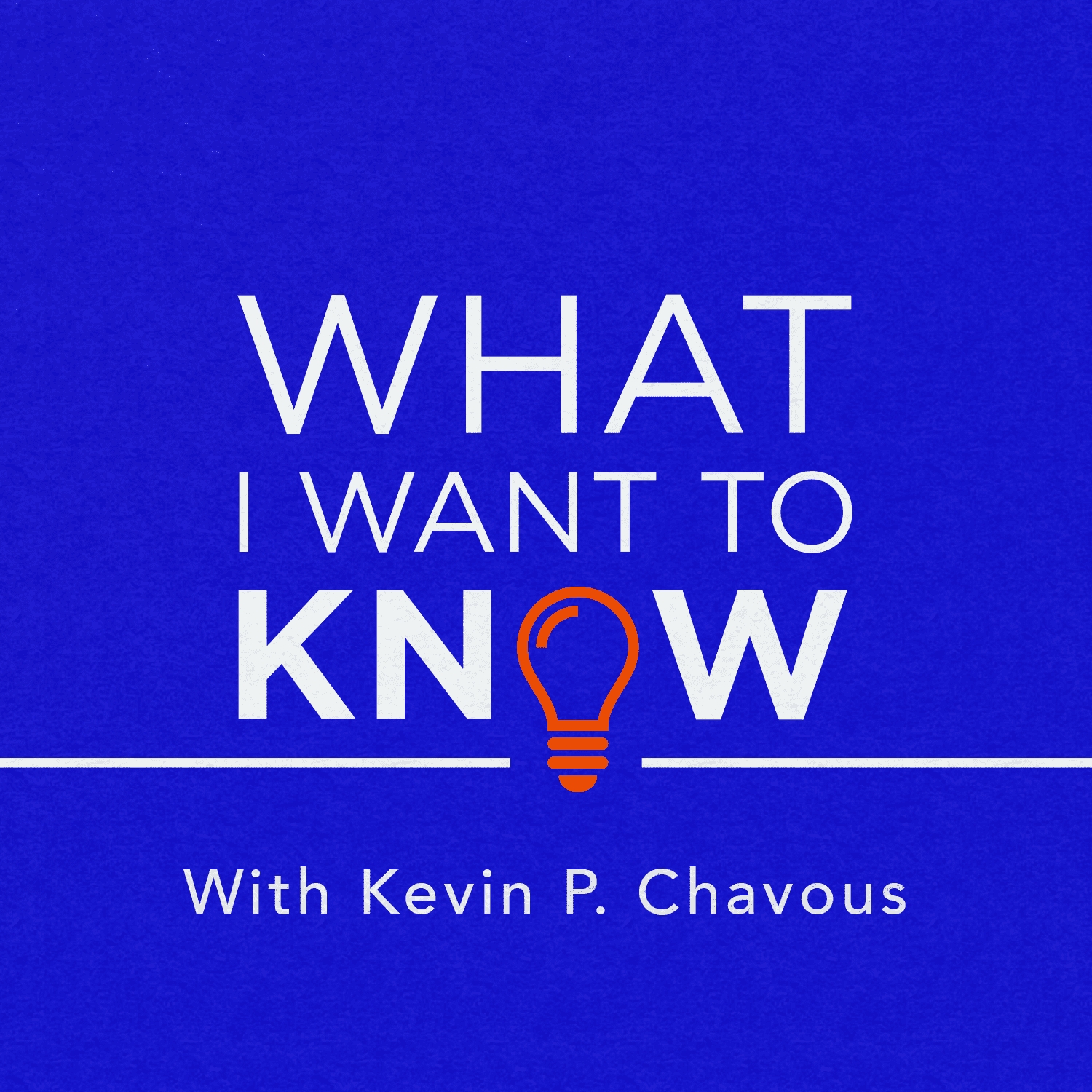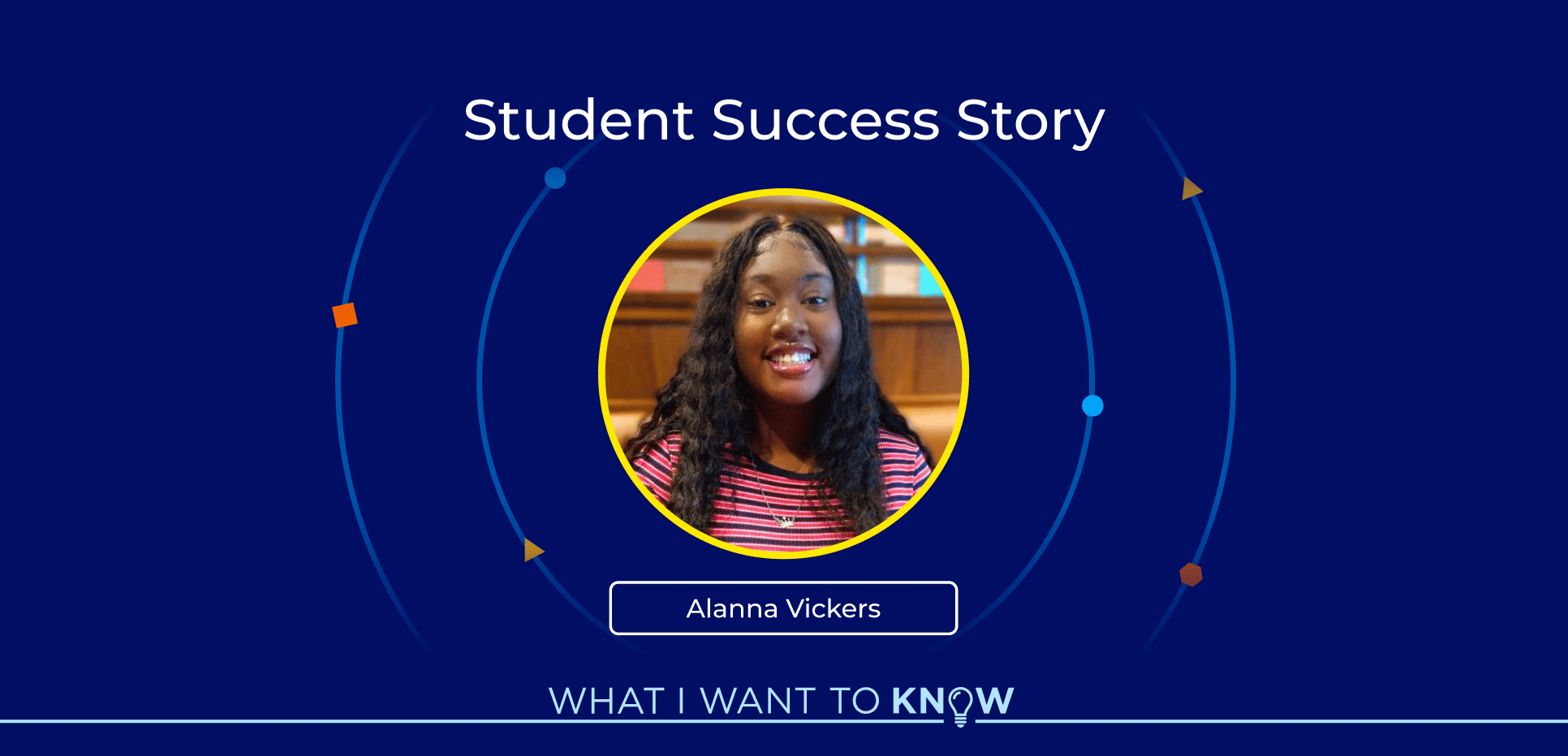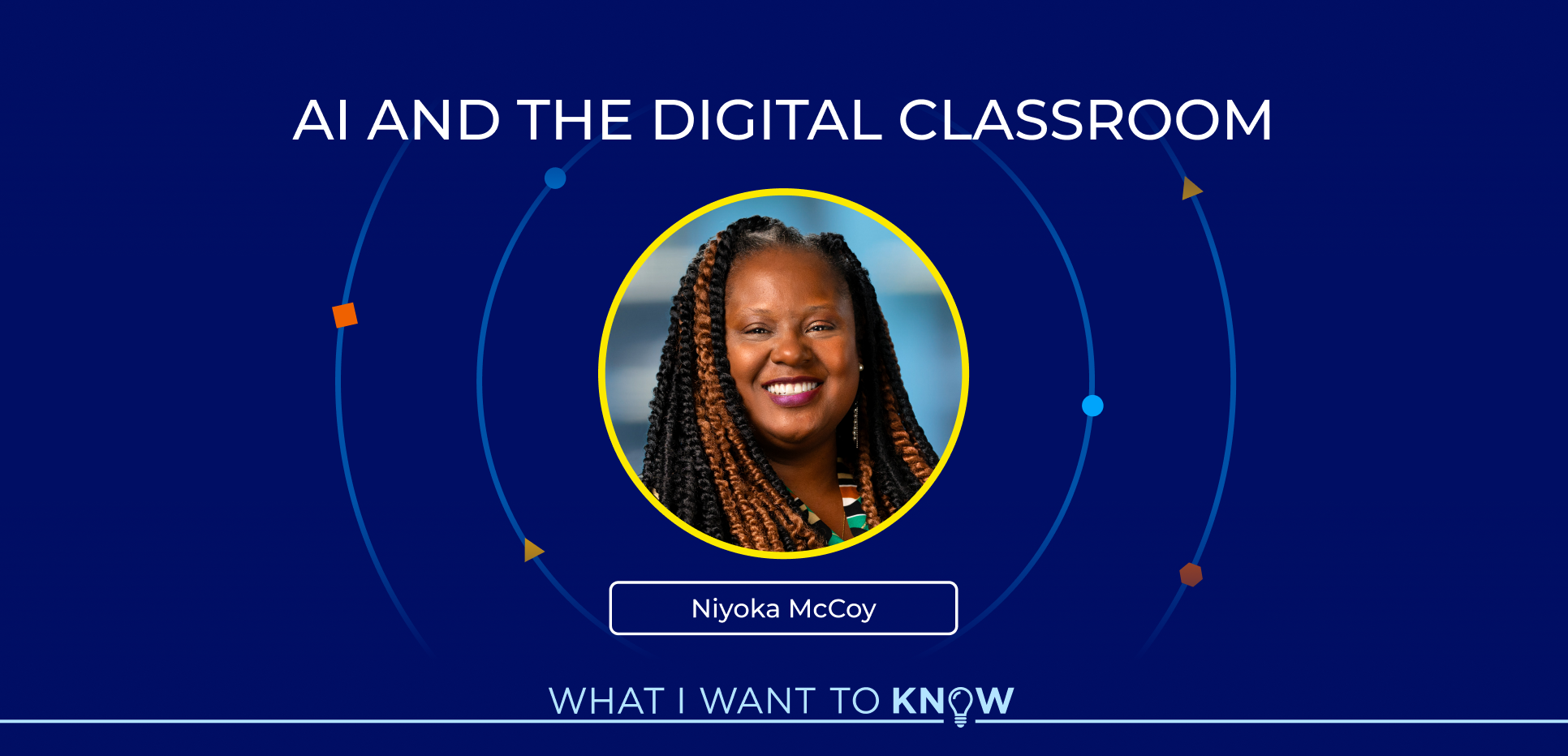According to the Cyberbullying Research Center’s 2021 study, 45% of middle and high schoolers in the U.S. had been cyberbullied in their lifetime—14% of students even admitted to cyberbullying someone else. As our youth interact on social media platforms, popular games with chat functions, and video-sharing sites, cyberbullying has never been more widespread.
What makes cyberbullying unique, and why is it a concern for schools? Does it affect students’ ability to learn and feel safe at school? And how can schools be proactive in preventing cyberbullying among students?
In this episode, Kevin discusses bullying in the digital world with the co-founder of the Cyberbullying Research Center, Dr. Justin Patchin.
Listen to the Full Audio
Listen on: Apple Podcast, Spotify
Transcript
Kevin: According to the Cyberbullying Research Center’s 2021 study, 45% of middle and high schools in the U.S. had been cyberbullied in their lifetime. Fourteen percent of those students even admitted to cyberbullying someone else.
As our youth interact on social media platforms, popular games through chat functions, and video sharing sites, cyberbullying has never been more widespread. What makes cyberbullying unique? And why is it a concern for schools? How does it affect students’ ability to learn and feel safe at school? And how can we be proactive in preventing cyberbullying among students?
This is What I Want to Know. And today, I’m joined by Dr. Justin Patchin to find out.
Kevin: Dr. Justin Patchin is a professor of criminal justice at the University of Wisconsin, Eau Claire. His research is on the intersection of teens and technology, with a particular focus on cyberbullying.
Dr. Patchin co-founded the Cyberbullying Research Center in 2009 to provide up-to-date information about adolescent use and misuse of technology, particularly related to social interactions. And for over 20 years as an author, blogger, and advisor, he has advised countless individuals who work regularly with today’s youth. He joins us now to share how we can protect the safety of our young digital citizens. Justin, welcome to the show.
Justin: Happy to be with you, Kevin. Thanks.
Kevin: So, I really want to talk about your work in the area of teens and technology and their social interactions on the internet and the like. But in looking at your background, I was intrigued by the fact that you had some relationship with the FBI as a futurist. Talk a little bit about that.
Justin: Well, going way back, I’ve always been interested in working with young people, working with kids. And I went to graduate school to study juvenile delinquency prevention.
A number of years later, I’m doing my research on what teens are doing online and some of the good and some of the bad. And I made some connections within the FBI, and they were also interested in this work as well.
And so, they had a program with the Behavioral Analysis Unit 15 years ago. You apply to be a futurist in residence. And essentially, it’s like a visiting scholar with the FBI at their training facility in Quantico. And so, I applied, basically saying some of these online behaviors were the future of what people are going to have to deal with.
And I got selected. And so, I basically spent a year working with the FBI and the National Academy and doing some teaching and some research about my interest in cyberbullying and sexting and sextortion and some of these emerging issues 12, 13 years ago. So, it was definitely an interesting experience.
Kevin: Talk about being ahead of your time. You were talking about this stuff 15 years ago. Do you feel like, in many ways, you were right, but it’s sad you were right? —That this has become such a prevalent issue?
Justin: Well, I am a criminal justician by training, and so I work in the criminal justice system. I teach in the criminal justice system. And I’m interested in teen technology issues. So the bottom line is, I’ve got good job security. One way or another, there are going to be bad things happening that I’m going to be interested in.
So, I first became interested in cyberbullying and the tech issues in 1999, and it was when I met my research partner, Sameer Hinduja, at Michigan State University.
Kevin: Many parents and school leaders know about cyberbullying. But I’m often surprised by the fact that even though they know about it, they don’t know the depths of it, and they don’t know how prevalent it is.
Justin: Yeah. I think everybody’s heard the term “cyberbullying.”
Kevin: Yes.
Justin: But like you said, they don’t necessarily understand the full depths of what it involves and how prevalent it is. And so, we know that probably a third of middle or high school students have experienced cyberbullying at some point in their lifetime. About 15% have experienced it in the most recent 30 days.
We know that the behaviors range from hurtful comments to threats to posting pictures online. The behaviors don’t change all that much, while the platforms and games and apps do evolve over time, and it is really hard to keep up with that side of things.
But typically, the teachers or parents who are most knowledgeable about these issues are, unfortunately, the ones who have had to deal with pretty significant incidents. And so, that’s how you learn a lot about it: when you get thrown into a pretty serious case of it.
Kevin: Now, cyberbullying: I’m going to ask a simple question now. How do you distinguish it from bullying that happens in a classroom?
Justin: Well, there are certainly more similarities than differences. And most of the time there is a connection. A lot of times when we talk with kids about this, the ones who have been cyberbullied have also been bullied at school, and sometimes by the same kids about the same kinds of issues.
Bullying, no matter where it’s happening, is a relationship issue. And so, a lot of times when you’re talking about kids, the relationship stems from something in the classroom or at the school or within their social network somewhere, and then it spills over online. Sometimes it happens opposite of that, but it’s very rare for kids to have only been cyberbullied. Usually, they’ve got some bullying going on at school as well.
So, the main difference is the medium, right? There are some unique attributes in the sense that with cyberbullying, it’s harder to escape, right? — In the sense that when I was bullied in middle school, I could go home. And I was protected at home for 12 hours, or whatever. Now kids go home; they have their devices; they’ve got their apps, and they’re accessible around the clock.
Kevin: And the essence of cyberbullying really involves the use of technology and the different means where technology comes into play. Even on Instagram or Snapchat or some of these other social media platforms, students are able to be a little more sophisticated with the bullying by using emojis or drawings or what have you.
So, talk a little bit about how technology as it’s evolved has actually contributed to cyberbullying, or at least the depths associated with cyberbullying.
Justin: You’re right. Technology has certainly made bullying easier, more accessible to some people. You might have a situation where: I don’t like somebody, but I don’t feel confident enough to go up to them and tell them I don’t like them. But I’m more than comfortable to type something on a social media platform or in a text message, especially since you have the capability of doing it somewhat anonymously or with a fake name. And the tools do make it easier.
Kevin: So, let’s talk about the Cyberbullying Research Center that you founded. Talk about why you founded it and what its mission and goals are in terms of addressing this issue.
Justin: We make ourselves available as much as we can. Again, we’re a two-person operation, Sameer and I. So, we sometimes get overwhelmed with the requests, but we do our best to help anybody who reaches out who’s dealing with these issues.
Kevin: As I understand, and correct me if I’m wrong, studies show that, clearly, bullying in any form, including cyberbullying, impacts students’ ability to learn and do well in school.
But then there’s also, with the increase of mental health challenges we’re seeing in our schools, the increase in suicide and suicide attempts; it all interrelates. So, talk about today’s reality for many students and the impact cyberbullying has on all these things.
Justin: Yeah. You’re right. There’s a lot of stuff going on in the lives of kids these days. And no doubt, a lot of mental health challenges, a lot of anxiety, a lot of depression. And some of that is related to bullying and just other societal, cultural issues that are going on.
We’ve done a lot of work examining, exploring the connection between bullying and cyberbullying and some of these problems, whether it’s suicidal ideation or other mental health issues. And we know they’re related. We know that there’s definitely a correlation there. We know that a lot of kids skip school because of their experience with bullying and/or cyberbullying.
Interestingly, a few years ago, we found that — we asked kids whether they felt safe at school. And among the students who had never been bullied and never been cyberbullied, over 95% said they felt safe at school. When among the kids who had been bullied at school, about three-quarters of them, so about 75%, said they felt safe at school. But among the kids who had been cyberbullied, only about half said they felt safe at school. So that was an interesting finding for us.
The kids who had been cyberbullied felt less safe at school, and we had assumed it would’ve been the ones who had been bullied at school that would’ve felt less safe at school. But after sort of digging into the data and talking with kids, they said, “Look, at least when I’m bullied at school, I know who to avoid. And I know I got to keep away from this person. Bad things are going to happen. When I’m bullied online, a lot of times I know who’s doing it, but I’m not necessarily sure who’s doing it. I don’t know who all’s seen it. And so, I have to constantly look over my shoulders. And it just creates more fear.” So, it definitely does impact the student’s ability to learn and feel safe at school.
Kevin: I wanted you to talk a little bit about best practices and what various stakeholders should be doing to, one, prepare for the likelihood of cyberbullying in a school, and how to address it. And we talked about parents. Do you have particular advice for parents who feel like their children may be bullied or cyberbullied?
Justin: Boy, we could spend multiple episodes talking about just that question, because those are all really great questions. Yeah. We’ve written several books to try to cover all those issues.
But I can boil my answer down into one word and then expand upon that. And that word is relationships. That word is relationships. It’s huge.
Kevin: You keep saying relationships.
Justin: I know, because it’s hugely important, right?
Kevin: Yeah. Yeah.
Justin: I think the relationship we have with our kids and the relationship we have with our students is hugely important because odds are they’re going to experience bullying of some kind in their lifetime, or at least some conflict or drama. And we want to make sure that they’re comfortable turning to us if it gets to the point where they can’t handle it. We don’t want them to get so desperate that they skip school or really bad things happen. So we want to be there for support and don’t want them to have to deal with it alone.
Honestly, at the same time, we shouldn’t step in and solve all of their little problems, especially relationship problems. They’ve got to learn how to work through that, too. But the relationship we have … So, I’ll give you a couple of examples.
So, from a parenting standpoint, we’re making sure we communicate with our kids, making sure they feel comfortable turning to us if they run into trouble online or at school. A lot of times, they’re afraid if they report to parents that they’re being cyberbullied, that the parent will respond by taking away the technology. Well, if you’re being bullied on Snapchat, well, just don’t go on Snapchat, right? So, I think it’s important for us parents to be reasonable and understanding and put ourselves back into the position of what it was like to be an adolescent and these things happening and support them in whatever needs to happen. And so, that relationship is hugely important.
Now, transitioning that or looking at that from the school perspective, we’ve done a lot of work: we wrote a book about school climate and school culture and cyberbullying and other online behavioral problems. And we think that the culture of the school is hugely important as well.
And what we want is the kind of school environment where bullying just doesn’t happen. That’s not what people do here. Bullying happens somewhere else. Or if bullying behaviors do occur, the classmates step up and say, “That’s not cool. That’s not how we do things.”
So again, it’s the relationship that really has an impact on these behaviors. And so, a lot of it stems from that, in cultivating positive relationships at school, in the family. Maybe it’s a relationship in a sports team or a faith community. I think all kids need positive relationships with peers and adults to help navigate the challenges that are coming up in adolescence. Especially bullying: whether it’s online or offline, it’s a large deal relationship problem.
Kevin: A lot of kids hesitate to inform parents about what’s going on for a host of reasons. How can parents best stay on top of the issue without having their child feel like they’re just this overseer who just won’t let them breathe? There’s that delicate balance there.
Justin: It is. Yeah. It’s tough. And I think it does. It depends on the kid, and it depends on their age. It depends on a lot of factors.
I wrote a blog post a while back talking about my experience. So, I have a 12-year-old son. And, of course, he’s my number one research subject when it comes to these issues. So for years, when I would pick him up from school, I would ask him how his day was. And even when he was in kindergarten, first grade. “How was your day?” And “Was there any bullying?” Sort of this conspiratorial tone, because Daddy needs some research content.
And so, for years, I would ask him that nearly every day. And then once he started getting into upper elementary or middle school, he’d start rolling his eyes, and it’s like, “Oh, come on.” Well, then one day, I hadn’t asked him in a while, and I picked him up and he said … some silence. And he said, “Well, what is the thing you usually ask me?” And I said, “Well, how’s your day?” And he’s like, “Okay. Yeah. And what else do you ask me?” I said, “Was there any bullying?” And he handed me a note that there had been some bullying at school that day.
Kevin: Wow.
Justin: And he wasn’t directly involved. He had just observed it. And he actually wrote it down, and I actually have the copy of it somewhere. “For Dad, about bullying.” And he wrote down a long paragraph. I think he was in fifth or sixth grade at the time. And he detailed what had happened. It was his classmate, and what his teacher had done, and he felt good about how it was handled.
The point is, I had those conversations over and over again over time, starting at an early age to prepare him for coming to me, turning to me, if something bad happens. We have to start early to open up those lines of communication.
And you are totally right about the balance and not forcing it too much. And you’ve got to find the right time. Don’t do it when they’re overwhelmed and don’t have homework done and hungry. Find those quiet moments where they’re accessible to you and just ask the question. Parenting is hard whether it’s bullying, cyberbullying or other challenging issues. We want to make sure our kids know that we’re there for them no matter what happens. And the communication, I think, is key.
Kevin: And it’s very true. So, one last question. This is what I really want to know. The question is, how can, in this current environment, parents and educators work better together to curb the growth of cyberbullying and other online risks? What are some things they can do together in spite of the challenges and the resource deficits?
Justin: Kevin, I’m going to go back to the two words I’ve been going back to the whole time we’ve been discussing. And that’s communication and relationship. Parents, alone, can’t deal with it either because a lot of times the consequences are happening in the classroom. So, I think we need to get everybody on the same page.
And that means meetings between educators and parents. Even something as simple as the school reviewing its bullying policy and seeing if it mentions cyberbullying. Making sure that the parents are aware of what the policy is and know where to turn to if their child is being bullied or cyberbullied. Is it the principal? Is it a counselor? Who do they talk to? What information does the school need to address it in terms of — usually, there has to be some connection, some nexus to the school, some impact at school. So, what can parents do in terms of documenting the challenges that their child is having at school as a result of the bullying?
So, the more that parents and teachers can work together to solve these problems, the better. It sounds great in theory, but in practice, it’s just so hard because of everything we talked about in terms of the lack of resources and the expectations that are placed on educators. But also the amount of things that parents have to do in a given day as well.
So, it is challenging, but that’s really the ideal: to get the parents and teachers on the same page, rowing the boat in the same direction.
Kevin: Communication, relationship building: It’s the essence of education. Frankly, we need more of it in other areas as well.
Justin: Absolutely.
Kevin: Justin Patchin, thank you so much for joining us on What I Want to Know.
Justin: I appreciate it, Kevin. It was great chatting with you.
Kevin: Thanks for listening to What I Want to Know. Be sure to follow and subscribe to the show on Apple Podcasts, Spotify, or your favorite podcast app, so you can explore other episodes and dive into our discussions on the future of education, and write a review of the show.
I also encourage you to join the conversation and let me know what you want to know using hashtag #WIWTK on social media. That’s #WIWTK.
For more information on Stride and online education, visit stridelearning.com.
I’m your host, Kevin P. Chavous. Thank you for joining What I Want to Know.
Meet Justin
Dr. Justin Patchin is a professor of criminal justice at the University of Wisconsin – Eau Claire. His research is on the intersection of teens and technology, with a particular focus on cyberbullying.
Dr. Patchin co-founded the Cyberbullying Research Center in 2009 to provide up-to-date information about adolescent use—and misuse—of technology, particularly related to social interactions.






